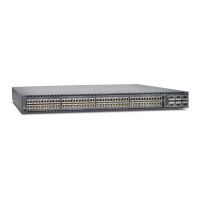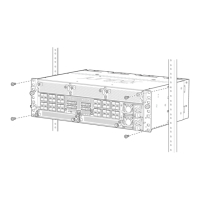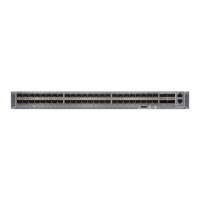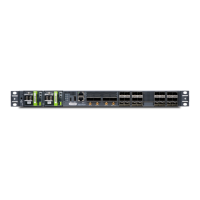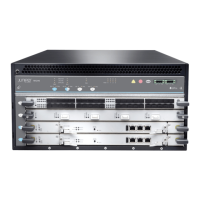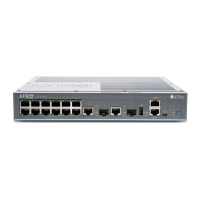Computation Client (PCC). It also shows how to configure the Path Computation Element
Protocol (PCEP) on the PCC to enable PCE to PCC communication.
•
Requirements on page 708
•
Overview on page 708
•
Configuration on page 711
•
Verification on page 716
Requirements
This example uses the following hardware and software components:
•
Three routers that can be a combination of ACX Series routers, M Series Multiservice
Edge Routers, MX Series 3D Universal Edge Routers, T Series Core Routers, or PTX
Series Transport Router, one of which is configured as a PCC.
•
A TCP connection to an external stateful PCE from the PCC.
•
Junos OS Release 12.3 or later running on the PCC along with the JSDN add-on package.
NOTE: The JSDN add-on package is required to be installed along with the
core Junos OS installation package.
Before you begin:
1. Configure the device interfaces.
2. Configure MPLS and RSVP-TE.
3. Configure IS-IS or any other IGP protocol.
Overview
Starting with Junos OS Release 12.3, the MPLS RSVP-TE functionality is extended to
provide a partial client-side implementation of the stateful PCE architecture
(draft-ietf-pce-stateful-pce) on a PCC.
NOTE: The partial client-side implementation of the stateful PCE architecture
is based on version 2 of Internet draft draft-ietf-pce-stateful-pce. Starting
with Junos OS Release 16.1, this implementation is upgraded to support
version 7, as defined in Internet draft draft-ietf-pce-stateful-pce-07. Releases
prior to 16.1 support the older version of the PCE draft, causing interoperability
issues between a PCC running a previous release and a stateful PCE server
that adheres to Internet draft draft-ietf-pce-stateful-pce-07.
To enable external path computing by a PCE, include the lsp-external-controller statement
on the PCC at the [edit mpls] and [edit mpls lsp lsp-name] hierarchy levels.
lsp-external-controller pccd;
Copyright © 2017, Juniper Networks, Inc.708
ACX Series Universal Access Router Configuration Guide
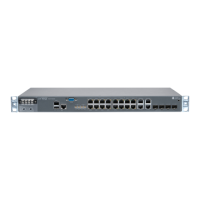
